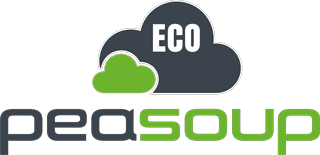Table of Contents
How to Connect PeaSoup S3 to Snowflake
Follow these steps to configure Snowflake to access and store data on PeaSoup S3. Since PeaSoup is S3-compatible, you can integrate it as an external stage or cloud storage backend for Snowflake.
Prerequisites
- PeaSoup S3 Access: Make sure you have the following information:
- Access key
- Secret key
- Bucket name
- PeaSoup S3 endpoint URL https://s3.eu-west-1.peasoup.cloud
- Snowflake Account with access to create external stages and run SQL queries.
Steps to Connect PeaSoup S3 to Snowflake
- Log into Snowflake:
- Open the Snowflake Console and log in using your Snowflake account credentials.
- Create an External Stage for PeaSoup S3:
- In Snowflake, you can define an external stage to reference data stored in PeaSoup S3.
- Run the following SQL query to create the stage using PeaSoup S3:CREATE OR REPLACE STAGE pea_soup_stage URL=’s3://your-bucket-name/’ CREDENTIALS = (AWS_KEY_ID=’your-access-key’ AWS_SECRET_KEY=’your-secret-key’) ENDPOINT=’https://s3.eu-west-1.peasoup.cloud‘;
- This will set up an external stage that points to your PeaSoup S3 bucket.
- Copy Data from PeaSoup S3 to Snowflake:
- Once the stage is set up, you can load data from PeaSoup S3 into Snowflake tables. Use the following query to copy data from the external stage:COPY INTO your_table FROM @pea_soup_stage/path-to-your-file FILE_FORMAT = (TYPE = CSV FIELD_OPTIONALLY_ENCLOSED_BY = ‘”‘);
- Ensure the file format matches your data (CSV, JSON, Parquet, etc.).
- Query Data from External Stage (Optional):
- You can also query data directly from PeaSoup S3 without loading it into Snowflake. For example, to query data in CSV format:SELECT * FROM @pea_soup_stage/path-to-your-file (FILE_FORMAT => (TYPE = ‘CSV’ FIELD_OPTIONALLY_ENCLOSED_BY = ‘”‘));
- This method allows you to work with the data in PeaSoup S3 without loading it into a Snowflake table.
- Secure PeaSoup S3 Access (Optional):
- For additional security, you can configure Snowflake to use external authentication mechanisms like AWS IAM roles or policies (if PeaSoup supports similar authentication features).
- Modify the credentials section in the stage creation to use a more secure access control method, such as temporary credentials or tokens.
- Test the Configuration:
- After setting up the stage, test loading data from PeaSoup S3 to ensure the integration is working smoothly.
- Monitor the data loading and querying process to ensure performance and accuracy.
Optional: Manage File Formats
- You can create specific file formats for different types of data stored in PeaSoup S3. For example, if your data is in JSON format:CREATE OR REPLACE FILE FORMAT json_format TYPE = ‘JSON’;
- Then, use this format in your data loading queries:COPY INTO your_table FROM @pea_soup_stage/path-to-your-json-file FILE_FORMAT = json_format;
Notes
- Ensure that PeaSoup S3 is accessible over the internet, and configure the correct permissions for Snowflake to access the bucket.
- PeaSoup’s S3-compatible API allows seamless integration with Snowflake’s external stages, enabling scalable cloud-based data processing and storage.
